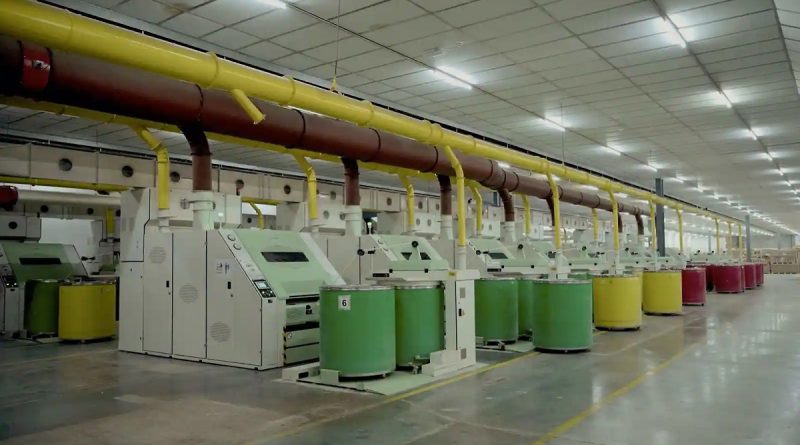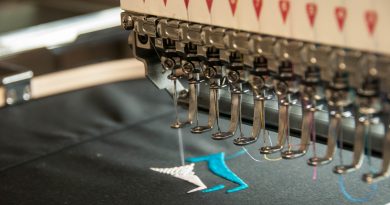Textiles And The Impact of Technology
Fabric or cloth has long been a part of culture and tradition wherein humans have associated with various functions soon it became part of fashion. Over the years, people have tried to make textiles into beautified varied garments that have adorned people. Some of them became instant successes and are found till today. A lot of fashion has gotten noticed over the years and they all came from the humble beginnings of trying to cover oneself with leaves, bark, and animal skins.
Unconventional materials were then discovered to be woven into cloth and stitched together to make clothes. People slowly realized how they could collect thread from plants, insects, and animals. They learned various techniques to make fabric artificially and they were stronger, more resistant and lasted longer.
Some of The Natural Fibers & Man-Made Fabrics
Cotton cloth is the most widely used fabric, followed by chiffon, polyester, Satin etc. The fiber of the plants was used originally to prepare yarn and then into woven material, hence the name fabric. Starting with simple fabrics, like cotton, silk, wool, jute etc., the man also learned to dye them with plant extract. Gradually the people started using cotton, linen, silk, wool materials for clothing.
Natural fibers like cotton, wool, jute, silk is popular as they are of plant origin, have high absorbent quality, are eco-friendly and durable.
- Cotton fabric is produced from cotton plant fibers. Cotton composes of cellulose, a soft and fluffy material with an insoluble organic compound, present in almost all plants. Due to its softness and durable properties, the cotton material is widely used to make t-shirt and undergarments. Denim, canvas, and organic cotton are examples of different cotton fabric types.
- Wool is a fabric made from the sheep hair, goats, llamas, alpacas, and other animals. Some of the popular wool fabrics include cashmere, angora, mohair and many more. The durable wool is most absorbent and gives a warm feeling when worn. To some extent, it is water-resistant due to the natural oil, lanolin, in the animals. Generally, wool is used to make outerwear, worn in colder weather conditions. Sweaters, coats, blouses, are some of the woolen outfits.
- Natural fibers like silk and cotton needed raw materials in large quantity and high maintenance, while woolen clothes shrank after wash or caused discomfort. The inventions of synthetic fibers paved the way to overcome these inherent limitations.
- The synthetic fibers or nylons, such as polyester, rayon, spandex, can be used separately or sometimes combined with natural fibers like cotton or silk to produce velvet, crepe, Satin etc.
- Acrylic is the artificial wool produced from coal, air, water, oil, and limestone. The resemblance and the cost-effectiveness have made acrylic to be used widely. Fake fur and fleece are prepared from acrylic fabric or imitation wool.
- The synthetic fibers delivered greater comfort, reduced soil dependency, stain-resistant, easy dyeing techniques, less abrasiveness, broader aesthetic range, lesser cost of the fabric, waterproofing quality etc.
- Khadi cloth is one type of fabric. Everything is carried out manually, from the harvest of the cotton plant to the removal of seeds, separating the fibers to spinning, dyeing, and weaving. Nowadays, due to industrialization, we can find that organic fabrics such as khadi have undergone many makeovers with many variations in prints and designs and quality or the texture of the cloth.
- Silk is another type of fabric produced to prepare handloom material, saree. Kanjeeveram sarees are handloom sarees.
You can use such cloth to stitch Blouse, lehengas, top, saree and many more.
Introduction of Innovative Technology
The time spent in production, labor handling and charges, uniformity in texture are advantages of machine-made textiles. With the advent of technology, external power gets used to fasten the process of weaving in the looms. Later the electrical and mechanical fields took over these handlooms and the automatic machines could produce the cloths in large quantities.
Denim fabric is a sturdy cotton fabric produced by machines. A soft, shiny fabric, most popularly known as Satin, has a shiny surface and a dull surface on the other side.
The handlooms always wanted manpower in pedaling, lifting, and lowering the warp, cleaning the left-over thread, in creating the cloth. The power looms operated based on this basic fundamental of working but replaced the power source manually with the help of a mechanical process run on steam power. With the help of electricity, the looms have become faster with robots taking over, computer-generated designs and patterns seem to be the calling cards for several manufacturers.
This revolution in the textile industry increased production, saved time and manpower, skilled labor and hence the cost of the material came down. Depending on the fabric material required, different power looms are used. Some of them are- Water jet loom for producing superior quality synthetic fabric in Surat, Rapier loom for fancy fabric can be seen in Solapur of Maharashtra, Sirsilla, Air jet power loom can be found in Bangalore, Bhilwara etc.
As much as technology has taken over the entire fabric industry, people still have a fascination for handwoven and handspun fabrics. Encouraging local artisans and craftsmen who have kept the centuries-old tradition alive continue to live for this passion of making exquisite fabrics that people fancy. Some of the traditional clothing material is still woven by hand. Machines may have helped produce the textile in large quantities. The machine cannot replace human power in these materials, like, Paithani sarees which have a centuries-old story behind the designs in the sarees.




